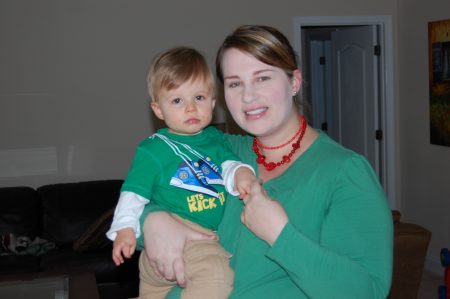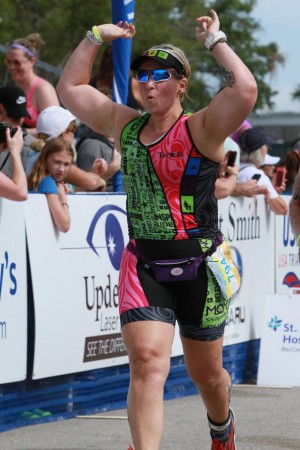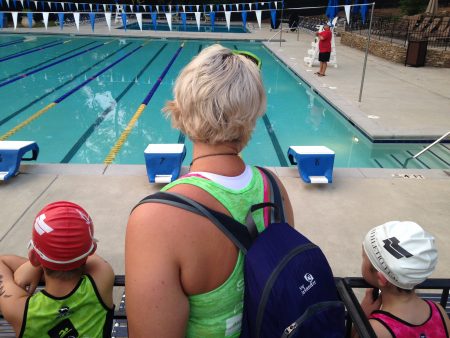

I loved talking with Josh, and I’ll be sure to let you all know when the podcast is up – because it really was awesome to get his great “life hacks” and tips on finding our inner athlete.
But our talk… it got me thinking. (I know, crazy right?)
From the first step I took to (re)find my inner athlete after the kids were born (circa 2008)–to my first triathlon (2010)–to today (whatever this year is)… what has (or hasn’t) changed along the way? What was the major accomplishment of all these years that helped me find my athlete?
One thing really comes to mind, and it’s so very simple.
I will start by saying that learning to find my athlete has, in turn, made me grow some thick skin. Many people sell themselves so very short when it comes to finding that athlete inside of ourselves. And to make the best of ourselves and our situation(s), sometimes, we have to toughen up. Pure and simple.
I grew up hearing that I was a terrible runner, so trying to become a runner later in life was a challenge on several levels—not just physically—but emotionally. I had a core belief that I couldn’t run. And core beliefs are nasty little boogers to break and re-frame.
The simple task of RIP can be exceptionally daunting. RIP was my one thing… the one thing that really helped change a lot for me.
RIP?
Yes, RIP.
RIP is a term that I have coined that stands for “Running In Public”—and for the adult-onset runner, it’s sort of the most horrifying thing EVER.
It’s also a major key to getting over fear of running, fear of failure, fear of jiggle and fear of excuses. RIP is like the gateway drug for your personal power.
For someone who starts to run as a child, runs cross-country, then track and continues to add on races into their 20s, the idea of RIP doesn’t even make sense.
“What?” they say, “I have been running in public for-evah!”
However, RIP is a big deal for some of us. For example. Me. Back in the early days—even before I even imagined the idea of triathlon, I started with “trying” to run. And I stayed indoors. That was hard enough.
When someone who is 70 pounds overweight, starts running with an 8 week baby at home, and another 16 month old kid, old tennis shoes and unstretchy-stretch pants? Well, RIPing is the worst thing imaginable.

SO I ran inside.
And then the treadmill was so painful, and running was so hard—I bruised the bottoms of my feet and thought, with all the conviction in my mind and in the world, “I just can’t do this.”
I don’t know what was inside of me that made me keep going.
Giving up seemed like a noble and smart choice, really. The jiggle and jaggle of my body. The pain. The weight. The sleep deprivation. I didn’t know what I was thinking.
I kept trying to run. Then I thought about running outside.
Gasp.
Looking back, I am not sure if I continued trying to run because it felt like the only thing, at the moment, harder than motherhood.
Motherhood felt really hard with two kids, fourteen months apart and a full-time job. Honestly, it was the first time in my life that I thought life felt impossible. And I didn’t know if I could do it. Yes, life. I didn’t know if I could keep going. With life. With me. With all the things.
I often wonder if—because running was so much worse (in my mind) than all the hard things in the my life—that I thought, if I can actually run, then maybe I can do life.


Maybe if I can run, then I can raise kids.
Maybe if I can run outside, I can keep going.
I didn’t want to have a fear of RIP. But I was scared of it. Pure and simple fear of running in public. But I was also scared of motherhood. And what I was going to do about that job I hated.
I knew I had to run. And in public.
I often tell my athletes that the only way around fear… is to crawl right up to that puppy and then march through it. Sounds easy, I know.
And really, facing fears is easy. IF we can do one thing. If we can look failure in the eye and say, “I don’t care if I meet you today. If I meet you (failure), I don’t care.”
I try and think about fears in the context of truth. Asking myself, “What is true?”
RIP is a real fear. But what is true about running in public? Those are the questions to ask.
I look gross. I jiggle. I am slow. People are laughing. I might fall. I might fail. I might quit…
And on and on it goes.
But this is just a list. These are just words and voices just telling us things. They are not true truths. They are just things, worrisome little brats and phrases who are bothering us, getting in the way of our goals.
The difference in the athlete I am now from “back then”?
I learned to be an athlete by taking these small risks. Like running over and over again. Then outside. Then taking on bigger “risks” and just putting one foot in front of the other.


But another truth, I think, is that our fears all run right back to some of our major, life-long insecurities. When I am scared about racing or other events, even to this day? It all points back to my major childhood insecurity: I am not a runner.
Taking control of that exact statement, embracing RIP—accepting the fear and doing it anyway— has been the single greatest gift on the journey to finding my inner athlete. I don’t have it mastered, but I have quieted the voice.


And in quieting that voice, I have been able to move forward.
And in moving forward, I am able to show the kids that they too can overcome obstacles. [Even scary ones like swimming and first triathlons.]
What has been YOUR big hurdle, and how have you worked to move past it?

This resonates with me: “Maybe if I can run, I can raise kids.” I started running in my 30s after having two kids. After I’d had a third, a friend asked if I wanted to train for the Marine Corps Marathon. I had NEVER considered a marathon. Somehow, it made sense. Training for a marathon with three kids (one just over a year old) and a career and LOTS of laundry somehow helped my sanity.
My head still goes there at times … but I find, as I grow older, I care less. I have come to terms with the fact that I do not “look like a runner”, nor will I ever be a “fast” runner. And that is okay for me. If I had one wish though, it would be that people, especially newbie runners who feel the pressure of RIP, realize that they are just kinda awesome for just being out there.